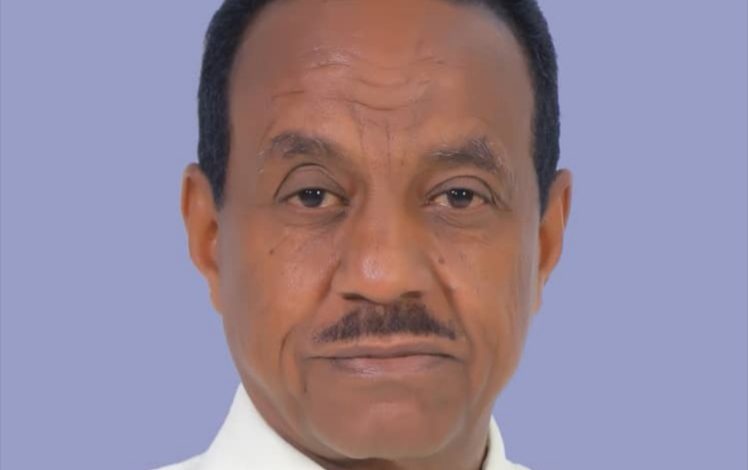Between Tribal Fanaticism and Political Ambition… How is Ethiopia’s present shaped?

Hashim Ali Hamid Mohammed
The peoples of Ethiopia were described in ancient history as actually isolated from the modern state due to distances from the metropolitan centers, geographical factors such as natural barriers, and local sufficiency with the necessities of life provided by the land. All of these circumstances came together and gave the Ethiopian countryside a life and psychological independence that remained difficult to be affiliated and easily submit to the center in Addis Ababa. To what extent has the environmental reality affected the nature of Ethiopia and its people? Where is the position of legitimate political ambition within international and regional competition in relation to the circumstances of local reality?
Over the past centuries, Ethiopia has been composed of diverse peoples within environments in which nature provides an easy life, which has made many environments closed off to its people, and this has given dimensions of customs and traditions that still impose their presence in many communities.
Ethiopian historian Sahid Adejomobi says in his book (History of Ethiopia): “The ancient chroniclers described Ethiopia as a land of terrifying mountains and deep valleys. The Greeks gave the country its name, which refers to the black population. The geography of Ethiopia has a long history, and it is as vital as the history of its people, thanks to its stunning scenery, with its diversity and magnificence, is unique in all of Africa.
Nature has a political action
The Ethiopian historian adds, “The highlands of Ethiopia are high and its valleys are deep, a thousand feet down, and perhaps the Abay (Nile) Valley is the most astonishing of them. With the exception of the high mountain ranges formed by volcanic lava, you find the interspersed areas taking the form of flat plateaus that the Ethiopians call (Ambas). Most of the plateaus are completely isolated from each other, although some of them are connected by very narrow paths between large cliffs.” He points out that “the intermittent nature of the Ethiopian highlands played an important role in its political and cultural history, as these giant mountain masses proved to be almost insurmountable obstacles to political leaders aspiring to unify the country, to invaders who wished to conquer it, and to those who tried, intermittently, to develop its economic resources. Geographical isolation in many regions created a spirit of relative independence, as the way of life has not changed for hundreds of years.”
Civil and non-civil
Do the stories of the conflict between civil and non-civil remain linked to the assumptions of nature in its various forms?
Ethiopia went through eras of wars that represented an important part of its modern history. At the regional and international level, Italian colonialism was only able to remain in Ethiopia for five years. The Battle of Adwa in March 1896 represented the highest degree of integration between nature and the will of the people of the country.
In the local dimension, the Eritrean issue had an impact on all life in Ethiopia for more than half a century, especially after the establishment of the “Eritrean Liberation Front” in 1958.
After Eritrea gained its independence in 1993, the Ethiopian state experienced better conditions despite the long suffering that resulted from instability and its impact on the state’s progress and renaissance.
Within the political movement and the resulting societal problems, the Tigray crisis erupted, which the Ethiopian state was able to overcome through international and regional efforts, restoring Ethiopian unity after the Pretoria Agreement was concluded between the Ethiopian government and the Tigray People’s Liberation Front on November 3, 2022. This month marks one year since the Tigray Peace Agreement, and its success is an indication of national concern for the unity of Ethiopia within the legitimate political ambition against any path that does not serve the unity of the state.
On Monday, the sixth of November, the Government Communications Office issued a statement on the occasion of the first anniversary of the signing of the “Peace Agreement and Permanent Cessation of Hostilities,” stating, “The peace agreement had an effective role in silencing the guns and paving the way for life to gradually return to normal in northern Ethiopia.” “.
The statement added, “The Ethiopian government demonstrated its firm commitment to implement the agreement, as it implemented bold and decisive measures to build confidence and consolidate peace.” The statement noted many details of the agreement, and what the government followed to fulfill its various provisions, most notably putting an end to all military operations and hostile speech against the Tigray People’s Liberation Front, and accelerating and facilitating the provision of humanitarian aid, in addition to many other details within the agreement. He added, “The government went beyond its obligations under the peace agreement to achieve its noble goals.”
The statement issued by the Government Communications Office continued, “The government refrained from deploying some large divisions of armed forces and security forces in the city of Mekelle (the capital of the Tigray region), despite its constitutional powers that were affirmed in the agreement. Moreover, with regard to the disputed areas “The federal government decided to bring the conflicting regional states together to reach a peaceful and legal solution to the problem.” The statement added, “This led to a clear path to resolve the problem in accordance with the Constitution of the Federal Democratic Republic of Ethiopia, which requires:
-The return of displaced people from these areas and the resumption of their agricultural activities.
– Establishing local administrations selected from local residents.
-Transferring all security and law enforcement missions in these areas to federal forces.
– And hold a referendum to decide the destiny of these areas.”
According to the Government Communications Office statement, “sustainable peace requires reciprocity from both sides,” noting that “retaining fighters who could have served their people in various public roles represents a challenge. Likewise, the disarmament process requires an inventory of the heavy weapons that were handed over.” “And a full handover of small arms and light weapons, which are still widespread in the region.”
“It is therefore essential that Ethiopia’s friends and partners continue to support and encourage all actors to adhere to the agreement and refrain from behavior that would jeopardize peace and security in Ethiopia,” he added. The statement stressed that “the federal government will redouble its efforts to promote peace and ensure the full implementation of the peace agreement.”
National peace
The comprehensive national peace project began after the call made by Ethiopian Prime Minister Abiye Ahmed in November 2021, when he “called on everyone who took up arms to rejoin society and refrain from engaging in destructive activities.” In December 2021, the Council of Ministers adopted the formation of “National Dialogue Committee” as an independent institution, including political and social elites entrusted with the task of activating the national dialogue.
The Ethiopian government took advantage of the new circumstance after the “Pretoria Agreement” to hand over weapons to the state, by calling on other parties to hand over their weapons as a manifestation of restoring the centrality of the state and restricting the use of weapons to its own hands, but this led to a new crisis with the same motives that we mentioned above, represented by the struggle for the center and decentralization, so the conflict moved to the Amhara region, in what was called the “Fano group” issue after the refusal to hand over its weapons, the matter that created a new crisis with the government.
Between violence and law
The Ethiopian government has entered into the current new peace cycle, but despite its diligence in adopting a comprehensive national peace for which it has mobilized a number of plans and means, it continues to collide with a local reality that contains ethnic residues that hinder the path of the state. Within the political tensions after the developments of the Fano crisis and the conditions it created, the Minister of the Government Communications Services Office in Ethiopia, Legs Tulu, said, according to what was reported by the Ethiopian News Agency (FANA) this November, “The emergency command center was able to Protect the country’s constitution,” referring to the law enforcement operation carried out by the government and imposed by the emergency law in the Amhara region over the past months. Tulu explained, “The extremist group calling itself Fano attempted to dismantle the constitutional system of regional and federal government, through armed violence and chaos, and to impose its economic and political motives in an unconstitutional manner.”
The birth of federalism
The head of the Ethiopian Institute for Popular Diplomacy, Yassin Ahmed, says, “Historical Ethiopia was ruled by a monarchy for three or four thousand years and was known as the Kingdom of Kush and the Kingdom of Abyssinia, where its empire extended to include the region of the current Horn of Africa to southern Aswan in Egypt, and the monarchies in historical Ethiopia expanded.” The borders of its empire shrink according to its strength and weakness.” He adds, “The monarchy period established tribal or ethnic identity at the expense of national identity and Ethiopian citizenship as a comprehensive identity for all Ethiopians, due to the monarchy that ended in 1974, with the fall of the late Emperor Haile Selassie.” Ahmed points out that “the arrival of the ruling coalition in Ethiopia (the Ethiopian People’s Revolutionary Democratic Front (EPRDF) led by the Tigray People’s Liberation Front) to power in Ethiopia in 1991, after its success in overthrowing the regime of Mengistu Haile Marim, was the moment of the birth of the Second Republic of Ethiopia and the birth of the regime.” Ethiopian Ethnic Federalism which was crowned by in the adoption of the new Ethiopian Constitution in 1995.”
The same speaker explains that “Ethiopia’s ethnic federal system was a political settlement to guarantee the rights of Ethiopian nationalities to enjoy a decentralized system of government that guarantees them autonomy for their nationality within the framework of their ethnic region, but at the same time they are subject to the unified state of Ethiopia, which has the central authority to protect the country’s international borders and manage the regional and international interests of the Ethiopian people.”
The Third Republic
Ahmed believes that “the birth of the Third Republic began with the arrival of Abiye Ahmed to the Prime Minister’s Office on April 2, 2018, when he adopted a comprehensive reform project for Ethiopia politically, economically, legally, educationally and culturally in response to the demands of the Ethiopian people.” He adds, “One of the most important features of the comprehensive reform process of the Third Republic of Ethiopia led by Abiye Ahmed and the ruling Ethiopian Prosperity Party is to lead the process of democratic transformation by developing the current political system from ethnic federalism to a democratic federal system based on Ethiopian citizenship and the administrative and geographical division of the democratic federal system, and not on the basis of the ethnic, racial and linguistic components of the Ethiopian nationalities.”
He continues, “In order to achieve the state of Ethiopian citizenship, Ethiopia must go through the stage of state of citizenship as a unifying identity for all Ethiopians within the framework of respect for cultural, religious, ethnic and linguistic diversity, which achieves peaceful coexistence to enhance the common internal and external interests of Ethiopians under a unified Ethiopia. This aspect requires strengthening the internal front.” and the centralization of power, which is what the government is working on after the Pretoria Agreement and the policy of collecting weapons stipulated in the agreement.”
Federalism – stability
For his part, Ethiopian journalist Anwar Ibrahim believes that “ethnic federalism played a major role in bringing people together and intermixing during the past 27 years of the previous era, which some may see as not being good. On the contrary, federalism provided stability, a solid development basis, interconnection, and economic plans, which is what we see now a development that some are trying to attribute to others, and a country like Ethiopia cannot be governed without an ethnic federal system in which everyone is equal, and any attempt to eliminate the federal mechanism and disrupt the constitution may lead to unfavorable consequences.”
Ibrahim explains, “There may be some obstacles and challenges to the federal system, but no matter how defected it may be, there are treatments that should follow development and make transparent amendments from time to time.”
He continues, “During the Ethiopian experience in governance since the era of ancient emperors and kings, there were specific nationalities that controlled and dominated power, and this led to the imposition of languages and cultures as the national basis and ignoring others. There were marginalized ethnic groups and were attributed to characteristics that could not be imagined, but the federal system that came after the last constitution of 1995 was the most successful and provided real stability to Ethiopia for more than two and a half decades, after which Ethiopia did not witness a similar period of stability. We may face another corrective movement led by all parties, no matter how long it takes, but what is happening now is… “New blocs due to events and wars may lead to Ethiopia retreating again to eras that we reject.”
Anwar Ibrahim believes that “one of the most important consequences that the government must take into account is the influential regional dimension, which is no less than the internal challenge, as it poses a source of security threat to the state. This requires a regional peace policy that establishes with neighboring countries the foundations of relations based on good neighborliness, and not… Interference in internal affairs and establishing comprehensive regional peace, which guarantees the real stability that all countries need to achieve their goals of renaissance and progress.”



